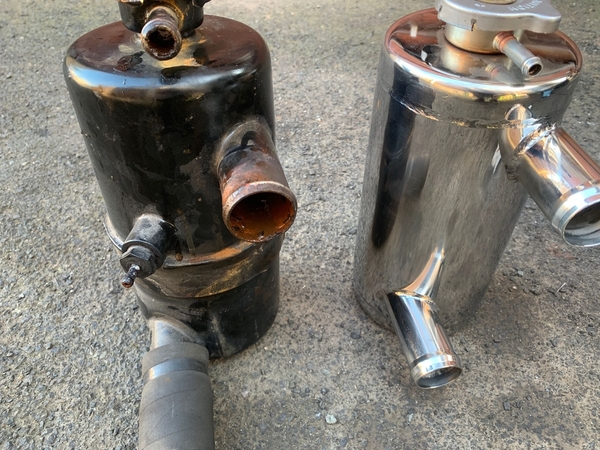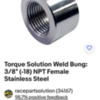On the Hall tank, that side fitting in a stock tank is only for the water temp sender, which Ford positioned there to give a lower temp reading. The sender rightfully belongs in the front of the block on the right top face, where it was for millions of other 351-C engines. Since nearly all US cars were so changed, Hall saw no value in adding a boss that would likely be plugged! Having the sender in the tank causes erroneous temp readings when the water level drops by only a little. Then you read the air temp over the water and get a false sense of confidence.... until it spits steam and coolant out the overflow!
The block is plugged with a pipe fitting which can be used in the stock tank while the sender screws into the block where the plug was. No parts needed; the sender wire connects to either position. Ford also had dealers put a resistor in that wire to further lower gauge temp readings. This nonsense went on until 1973 when Ford finally used a new 0-260F gauge in place of the 0-220F early gauge, which was often pegged in normal driving. There are other factory design screw-ups re cooling that are almost as easily fixed at home.
A rusted out tank(s) simply means that previous owners left old anti-freeze in far too long and the additives against rusting were used up. Bad cost savings decision!





